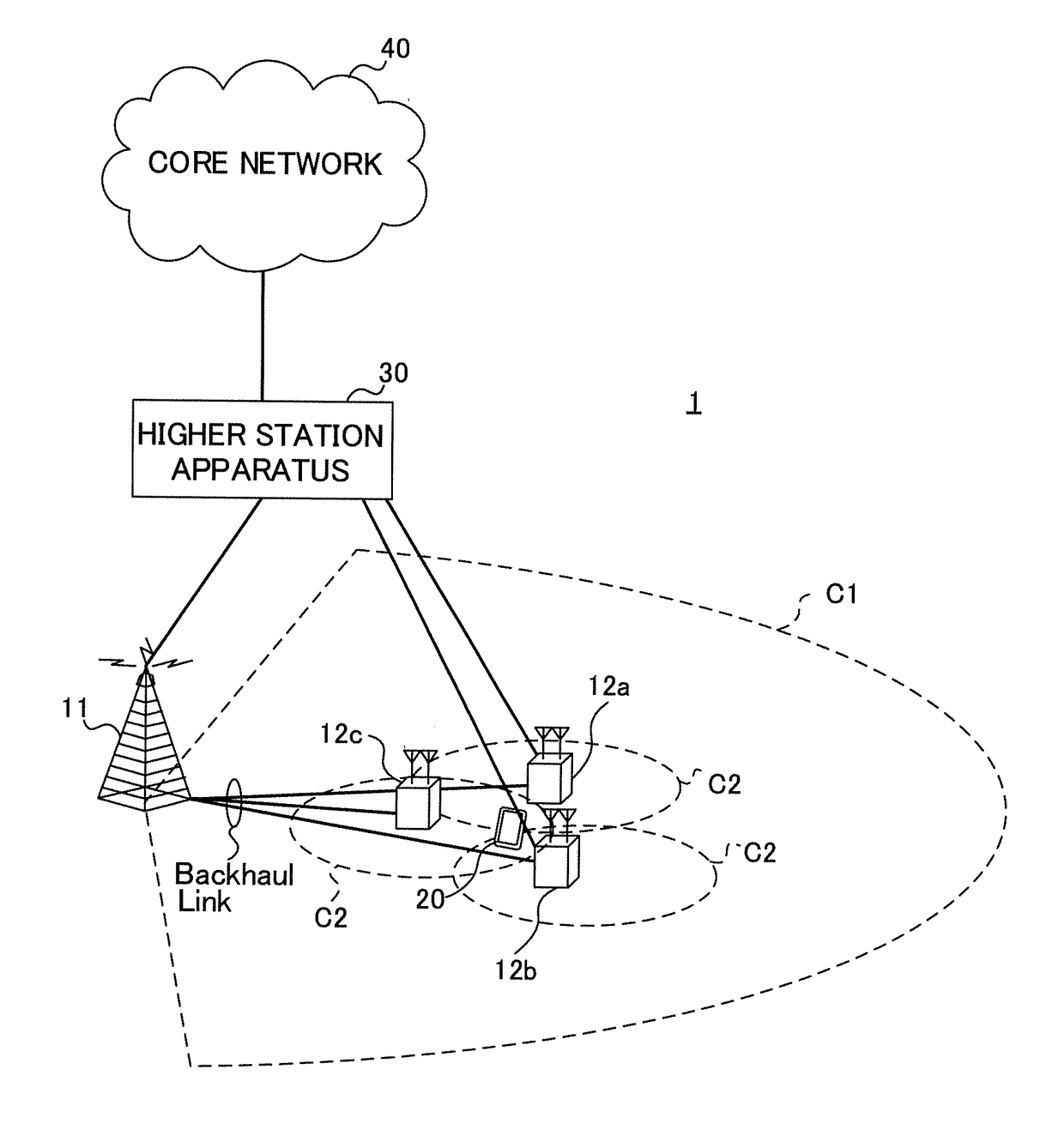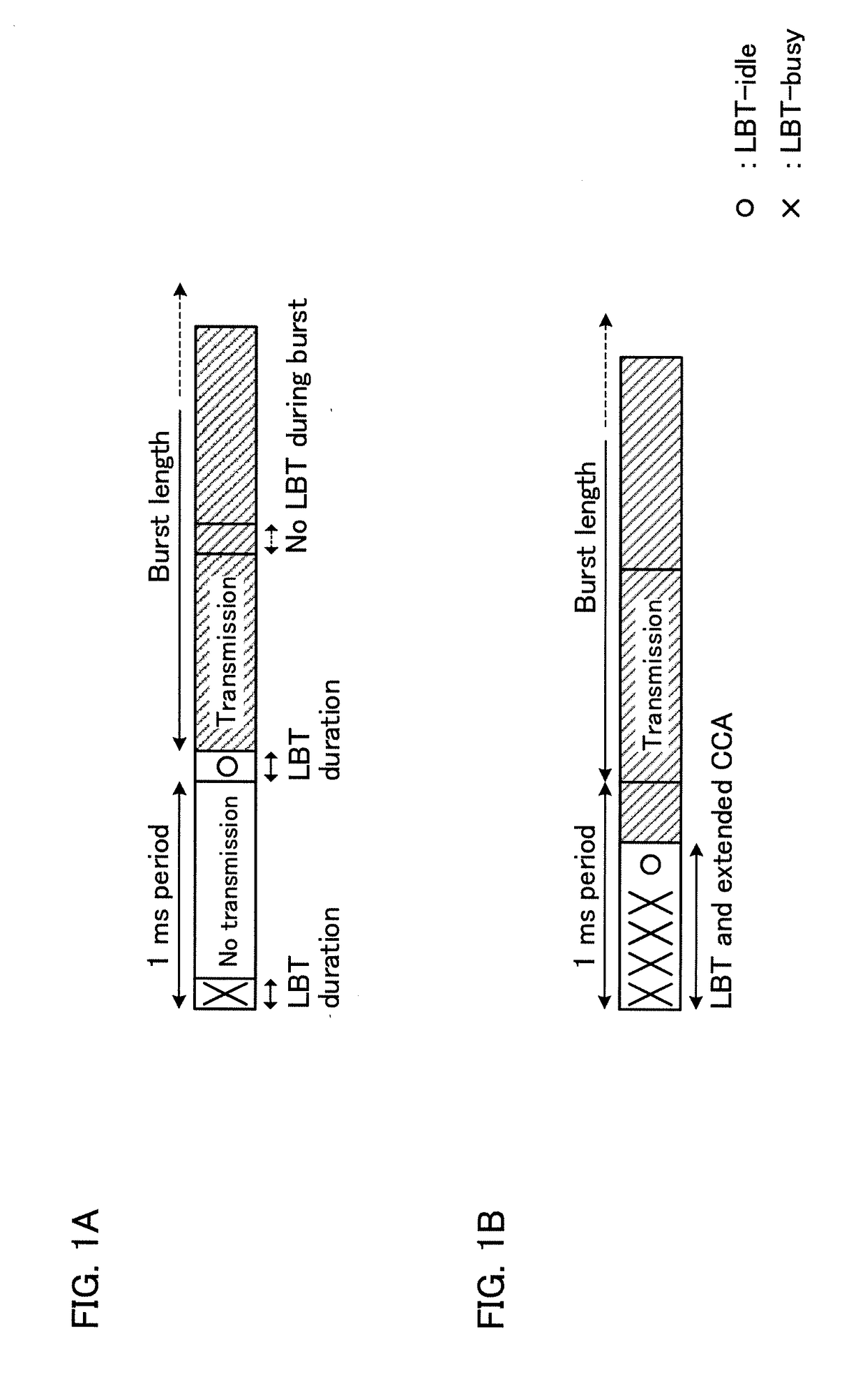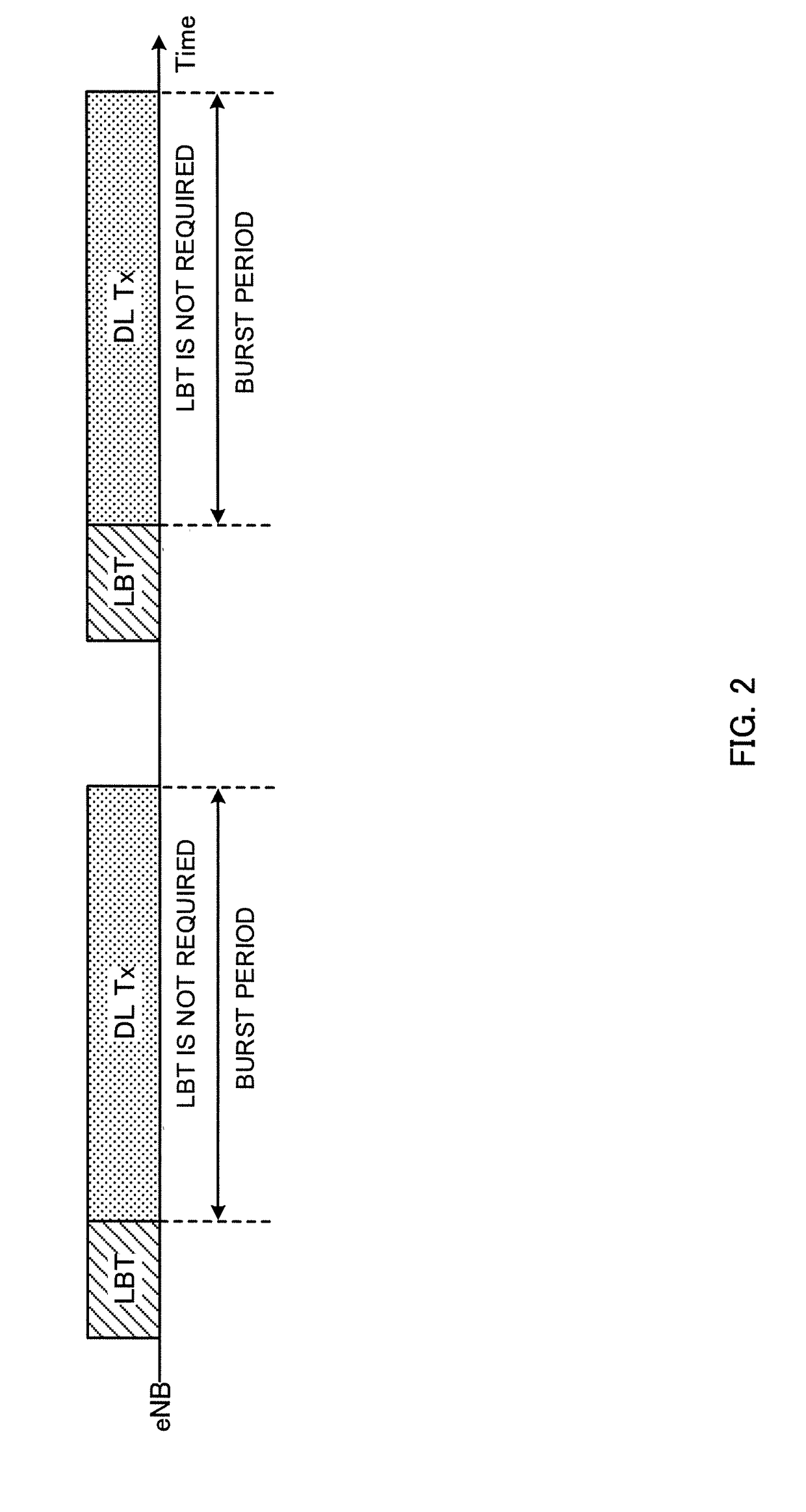Radio base station, user terminal and radio communication method
a radio communication method and user terminal technology, applied in the field of radio communication methods, can solve the problems of limited spectra of licensed bands, and achieve the effect of improving spectral efficiency
- Summary
- Abstract
- Description
- Claims
- Application Information
AI Technical Summary
Benefits of technology
Problems solved by technology
Method used
Image
Examples
first example
[0056]With a first example, a case will be descried in detail, in which channel state information measurement reference signals, which are not multiplexed with data and / or control signals, are transmitted based on LBT, in addition to CSI-RSs, which are multiplexed and transmitted with DRSs and data information.
[0057]According to the first example, a radio base station to form an LAA SCell and a user terminal are connected. The radio base station uses an unlicensed band, and is a small base station that forms a small cell.
[0058]In radio communication between the radio base station and the user terminal, listening is executed before signals are transmitted. Here, downlink (DL) signals, to which listening has been applied, are transmitted from the radio base station to the user terminal.
[0059]When the radio base station transmit a CSI-RS to the user terminal, the CSI-RS is transmitted by way of (A) burst transmission in which the CSI-RS is multiplexed over DL data (data burst including...
second example
[0084]As a second example, an example to use ABT that is based on CCA in CSI-RS transmission will be described. In the second example, a radio base station performs either of the following two operations depending on the result of CCA.
[0085]When the result of executing CCA makes it clear that the channel is in the idle state, the radio base station can transmit a CSI-RS without applying random back-off. For example, when the result of executing CCA once shows that the channel is in the idle state, the radio base station can transmit a CSI-RS. When random back-off is not applied, the radio base station can transmit signals a short period after CCA.
[0086]When the result of executing CCA shows that the channel is occupied by another device, the radio base station determines that CSI-RSs cannot be transmitted in the present state. In this case, the radio base station may control CCA in the following manner.
[0087]The radio base station does not execute CCA until the next cycle. Alternati...
third example
[0091]As a third example, examples of operations of a radio base station and a user terminal when a CSI-RS is successfully transmitted will be described.
[0092](Skip Operation)
[0093]When a radio base station successfully transmits a CSI-RS to a user terminal, the radio base station does not transmit (do suspend or “skips”) new CSI-RSs for a certain period following the timing the CSI-RS was transmitted. In this case, the radio base station may skip the sequence of CSI-RS transmission operations even when CSI-RSs are configured for transmission.
[0094]Also, when the user terminal successfully receives a CSI-RS that is transmitted from the radio base station, the user terminal assumes that CSI-RSs are not transmitted from the radio base station for a certain period following the timing the CSI-RS was transmitted. In this case, even if the resource locations of CSI-RSs are configured from the radio base station in advance, the user terminal can skip CSI-RS measurements and reporting rega...
PUM
 Login to View More
Login to View More Abstract
Description
Claims
Application Information
 Login to View More
Login to View More - R&D
- Intellectual Property
- Life Sciences
- Materials
- Tech Scout
- Unparalleled Data Quality
- Higher Quality Content
- 60% Fewer Hallucinations
Browse by: Latest US Patents, China's latest patents, Technical Efficacy Thesaurus, Application Domain, Technology Topic, Popular Technical Reports.
© 2025 PatSnap. All rights reserved.Legal|Privacy policy|Modern Slavery Act Transparency Statement|Sitemap|About US| Contact US: help@patsnap.com



